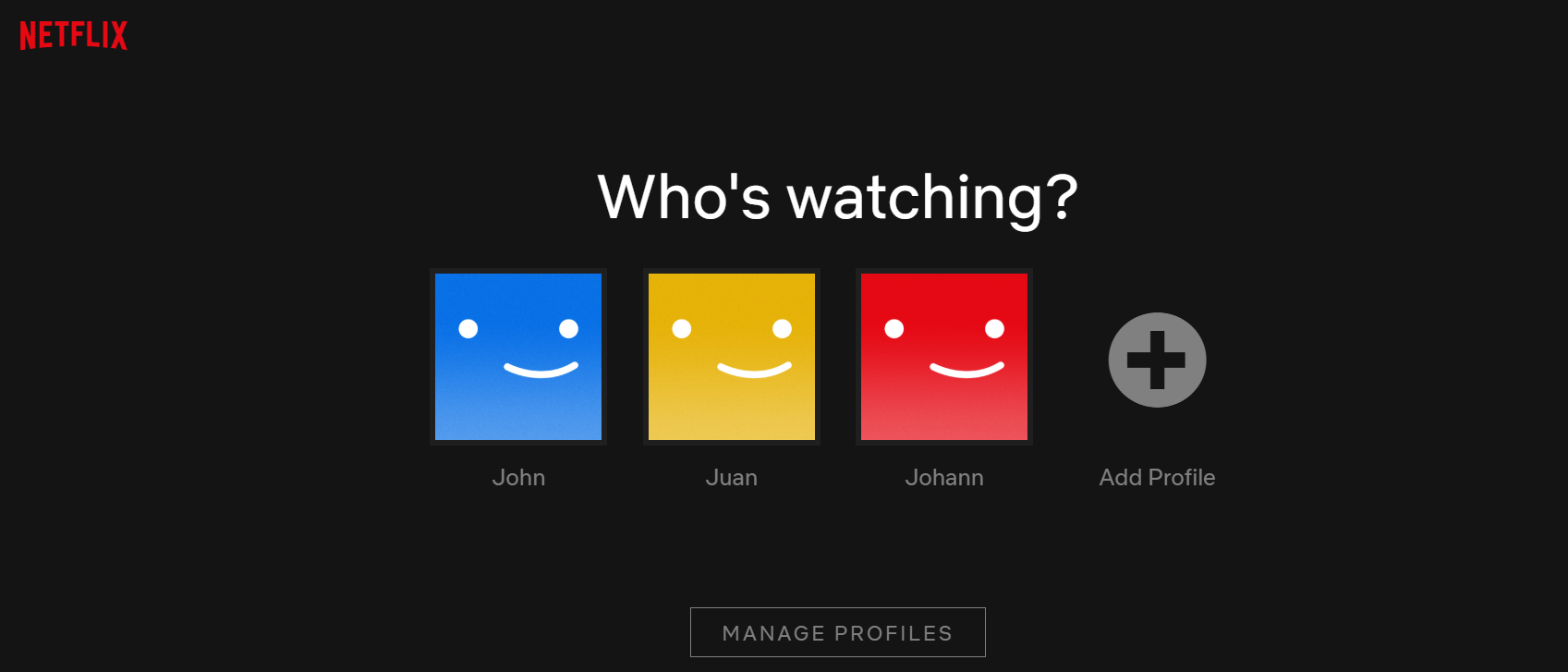Netflix and other streaming services are actually great ways to improve your language skills. Remember how we all learned our first language: by listening to that language being spoken around us, day after day.
The image above is Sarande, Albania! Visit our log in page to see images from every country on the planet.
Overview of your options
Before we get into the details, a quick overview of your options:
- Audio in the language you're learning, subtitles optional (the best choice, even for beginners!)
- Audio in your native language, subtitles in the language you're learning (only recommended for young beginners)
Fairly straightforward, right? We recommend option 1, even for beginners. As a beginner you may not understand anything at all...but that's ok! Just trust us, as a group we have quite literally centuries of combined language education experience (but we'll explain more below, just in case you don't trust us yet)
🎥 First step: Create profiles for each language you are learning, and set their languages
No matter which option(s) you're going to use, create new "profiles" for each language you are learning. In this example John is learning Spanish and German, so he created profiles Juan and Johann. Anytime he's working on his Spanish he'll use the Juan profile, and anytime he's working on his German he'll use the Johann profile.
To create new profiles, just click the "Add Profile" button on the Netflix home page:

Next, set the language in each profile to the language you're learning.
To do that, click "Manage Profiles" on the home page, then the edit button.
🔊 Option #1: Audio in the language you're learning, subtitles optional (the best choice, even for beginners!)
This option is not only the best, but the easiest to explain: just click on the Netflix profile you created for the language you're learning (Juan in our example, when we want to practice our Spanish). You'll get tons of movies and tv shows in the language you're learning.
Watch them! Don't slow down the playback speed, and try to refrain from pausing and looking at a dictionary often. Really, just listen and try to understand from context what is going on.
We know, we know: how on Earth could you ever try to watch Stranger Things in Spanish, you'd have no idea what is going on! Well, setting aside the fact that we have no idea what is going on in Stranger Things when we watch it in our native language....
Immersion works. Full stop. End of story.
Is immersion sometimes difficult, sometimes frustrating? Sure.
But if you want to learn a new language, you're going to have to immerse yourself in that language. That's why tv and movies in a foreign language are really helpful. This isn't just our opinion and what we've seen in our personal experiences as language educators, it's backed up by a lot of research. It is in fact why our founder started LanguageConvo: immersed in Spanish 1-on-1 lessons in rural Nicaragua while on a very unplanned backpacking trip, he learned more Spanish in two weeks than he had learned French in 4 years of formal schooling.
Subtitles?
Sure! Try turning on the subtitles in the language you're learning. Try turning on the subtitles in your native language. Both are fine, and both will help you pick up new vocabulary. But also try watching with no subtitles; we know it feels like you aren't understanding much, but that is what immersion feels like.
Who do you think will remember the Spanish word for "baseball" more easily: the person whose teacher tells them in English "you need to memorize the word for baseball in Spanish, it is béisbol. Great lesson, see you on Friday!" or the person who has a discussion in Spanish with their teacher about their favorite béisbol team? The person who watches a 30 minute tv show in Spanish about béisbol where the word is said 100 times, or the person who looks at subtitles and tries to memorize it after hearing it in context only once or twice?
🔈 Option 2: Audio in your native language, subtitles in the language you're learning (only recommended for young beginners)
For young students, and complete beginners, it can be helpful to watch programs in your native language with subtitles turned on the language that your'e learning. In our experience the primary benefit of this is helping get children excited about learning a new language; just seeing words in a new language can often get your child interested in learning more. The other benefit of this method is that you'll learn some vocabulary, but it obviously won't help you with listening comprehension.
🎉 Get started!
Are you interested in really, finally learning a new language? Here at LanguageConvo we connect you with a professional, native-speaking teacher for affordable, customized private lessons. Get started with a 100% free trial lesson by clicking here.
